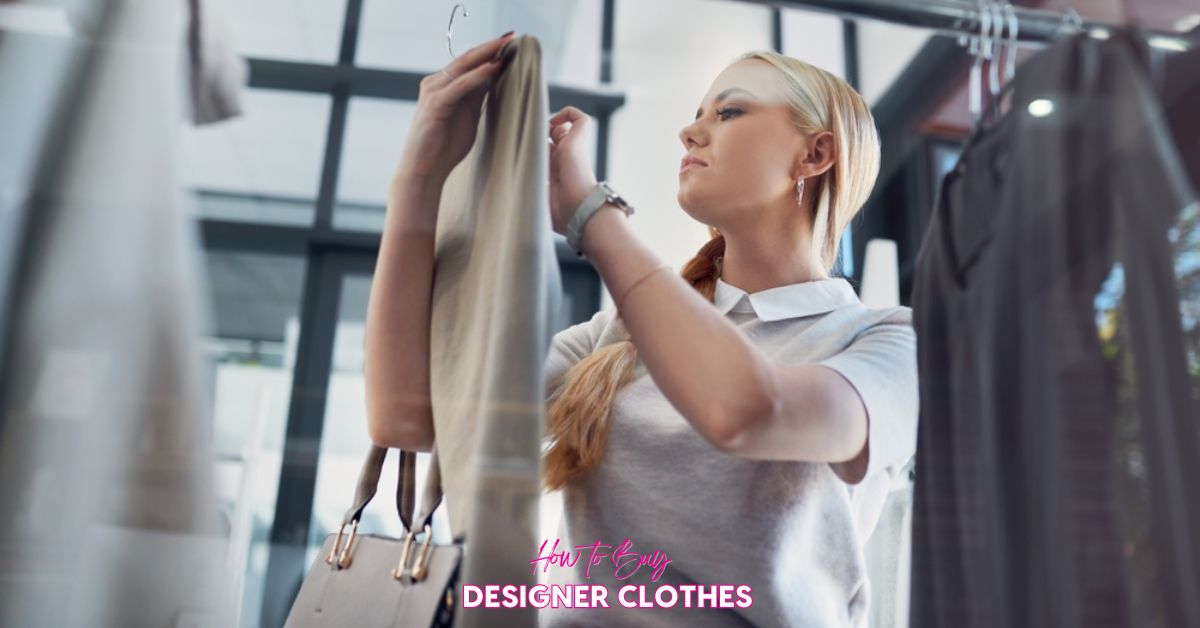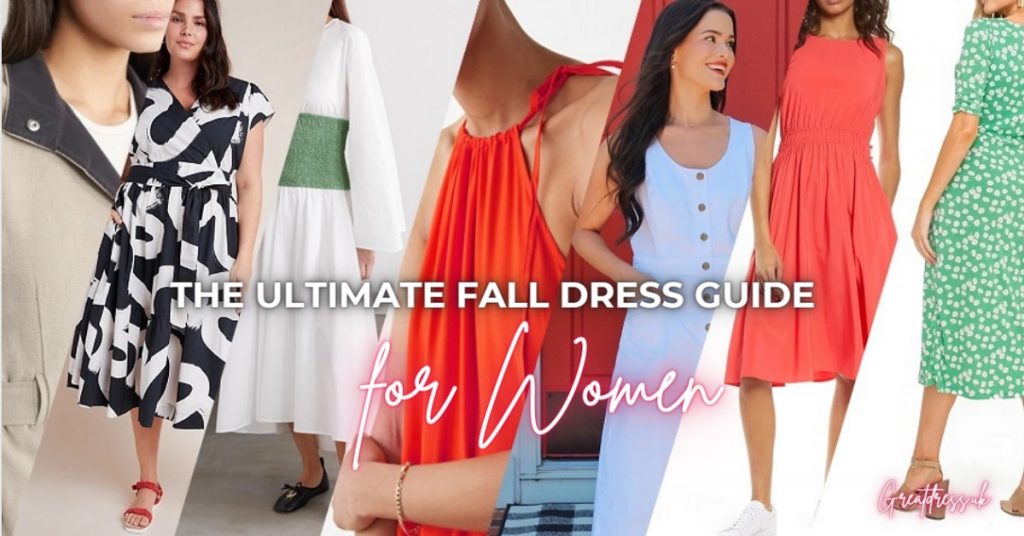We’ve all been there — staring at that breathtaking Dior dress or a classic Burberry trench online, heart racing at the sight, then sinking when we see the price tag. But what if you could shop designer fashion without the guilt, the splurge, or the second-guessing? What if your wardrobe could sparkle with pieces that feel luxurious, last for years, and still respect your budget?
The truth is, you absolutely can. Today’s fashion landscape is changing — and fast. The line between luxury and affordability is blurring, thanks to smart shoppers, digital resale platforms, and insider-savvy buying strategies. Whether you’re a working professional curating your dream wardrobe or a busy mom looking for affordable luxury, learning how to buy designer clothes online is a game-changer for your style and your wallet.
The New Luxury Economy: How Fashion Became More Accessible
Just a decade ago, “designer” meant unattainable. Now, the luxury resale and outlet market is booming. According to a 2024 report by IMARC Group, the global secondhand luxury market was worth USD 37.2 billion, with projections to nearly double by 2033.
Why? Because women worldwide have embraced smarter, more sustainable shopping habits. Fashion is no longer about owning the latest — it’s about buying better. Whether it’s a pre-loved Chanel bag from Vestiaire Collective, a discounted Prada dress from The Outnet, or a barely-worn pair of Gucci loafers from The RealReal, luxury is now within reach for any woman who knows where to click.
Step 1: Define What “Designer” Means to You
Before you start filling your virtual cart, pause for a moment. “Designer” can mean different things to different women — and clarifying what it means to you is the foundation of shopping smart.
Ask yourself:
-
Are you drawn to brand prestige, where a signature logo or monogram makes you feel elegant and seen?
-
Or do you crave exceptional craftsmanship, such as hand-stitched Italian leather or precisely tailored blazers that last for decades?
-
Maybe it’s about personal reward — treating yourself to a piece that marks a milestone or celebrates a success.
When you know your “why,” you spend with intention instead of emotion.
Style Smart Tip
Create a “Designer Dream List.” Write down five timeless pieces you’d love to own — like a Hermès scarf, a Max Mara coat, or classic Chanel ballet flats. Track those specific items on Lyst, Karma, or ShopStyle. You’ll see how their prices fluctuate over time, giving you an insider’s advantage when they finally go on sale.
Pro Insight:
Women who define their signature style early tend to make better fashion investments. A crisp blazer, a structured handbag, or a silk blouse that flatters your shape will outlast seasonal fads every time.
Step 2: Know Where to Shop (and Where to Avoid)
Not all online platforms are created equal. Some are havens of authenticity and fair pricing, while others are breeding grounds for counterfeits or inflated “resale” markups.
Here’s a quick guide to the platforms seasoned shoppers swear by:
Trusted Designer Discount Outlets
-
The Outnet: Offers up to 70% off labels like Chloé, Zimmermann, and Balmain. They frequently host flash sales where new stock drops mid-week.
-
Nordstrom Rack: Perfect for everyday designer staples—think Vince trousers or Tory Burch flats.
-
Saks Off 5th: Great for discounted handbags, fragrances, and small accessories.
Curated Luxury Resale & Consignment
-
Vestiaire Collective: Every item is authenticated by experts; users can negotiate prices directly with sellers.
-
The RealReal: Their in-house authenticators specialize in designer bags, jewelry, and shoes.
-
Fashionphile: Known for pristine-condition luxury handbags and accessories.
-
Yoogi’s Closet: Offers clear condition ratings and authenticity guarantees.
Where to Be Careful
Platforms like eBay or Depop can offer amazing deals, but require caution. Always buy from top-rated sellers, ask for proof of authenticity, and use payment methods that offer buyer protection.
Step 3: Use Price Alerts, Coupons, and VIP Tricks
Luxury brands rarely shout about discounts — but that doesn’t mean they don’t exist. You just have to know where to listen.
How to Stay Ahead of Sales
-
Subscribe Smartly: Use a dedicated “shopping” email to sign up for store newsletters. The Outnet, Farfetch, and MatchesFashion often reward subscribers with 10–15% off first orders.
-
Follow Flash Sales: Many retailers announce short-lived sales on Instagram Stories or Twitter before anywhere else.
-
Join Loyalty Programs: Farfetch’s loyalty tiers give early access to sales, while Net-a-Porter’s “EIP” members get first dibs on new collections.
Real-Life Story:
Maria, a London-based teacher, dreamed of owning a Burberry trench coat. She tracked one on The Outnet for three months. One morning, she got an alert — 50% off. She stacked it with a first-order code, paid via a cashback card, and finally owned her dream coat for under £600.
Step 4: Shop Resale Like a Pro
Pre-loved doesn’t mean pre-worn — and it certainly doesn’t mean second-best. In fact, the best finds often come from women who wore something once, stored it beautifully, and decided to resell.
The Resale Revolution
According to Savanta’s 2024 report, 63% of luxury shoppers now buy resale. Many do it to support sustainability while saving big.
Smart Resale Shopping Tactics
-
Learn Condition Codes:
-
NWT = New with tags
-
Like New = Minimal wear
-
Very Good = Light use, no damage
-
Good = Visible wear but structurally sound
-
-
Ask for Extras: Request detailed photos, authenticity cards, and packaging shots.
-
Use Price Comparisons: Check the same item across several platforms — Vestiaire, eBay, and Fashionphile — before buying.
-
Negotiate: Many resale sellers expect offers. A polite 10–15% counteroffer can save you hundreds.
Style Smart Tip
Luxury resale platforms often host “Weekend Price Drops.” Check Fridays and Saturdays — sellers are most active and more open to negotiation.
Step 5: Authenticity and Return Policy — Your Safety Net
Your safety comes first when you buy luxury online. While big-name platforms have built-in authentication systems, independent sellers can be trickier.
Checklist for Authenticity:
-
Look for serial numbers (Chanel, Louis Vuitton, Gucci, Dior all have them).
-
Verify stitching, lining, and logo placement against official product photos.
-
Use authentication apps like LegitGrails or Entrupy for peace of mind.
-
Pay with credit cards or PayPal for buyer protection.
Return & Refund Rules:
-
The RealReal and Vestiaire offer returns on most items within 14 days.
-
Boutique resale shops may have “store credit only” policies — read before buying.
Red Flag Reminder
Beware of newly launched “luxury deal” sites with no reviews, poor grammar, or prices that seem unrealistic. Real designer pieces are rarely 90% off unless it’s a verified outlet clearance.
Step 6: Shop Off-Season and Around Key Sale Dates
Timing is everything in fashion. The biggest discounts often appear when shoppers aren’t looking.
Best Months for Designer Deals
-
January & July: End-of-season clearances — perfect for coats, boots, and knits.
-
April & October: Mid-season sales — transitional items like blazers and loafers.
-
November & December: Holiday deals — excellent for gifting or investment pieces.
International Advantage
European sites such as MatchesFashion and Farfetch often mark down items weeks earlier than their U.S. counterparts. Sometimes, even after shipping and duties, you’ll still save 20–30%.
Real-Life Example:
A Toronto-based stylist scored a Valentino handbag 55% off from a Milan boutique’s online clearance. Even with import tax, it cost less than half the North American retail price.
Step 7: Save More with Payment & Shipping Hacks
Every dollar counts — and small tweaks can shave off more than you’d expect.
Money-Saving Tactics
-
Use Multi-Currency Credit Cards: Cards like Revolut or Wise offer favorable exchange rates when buying from international sites.
-
Consolidate Shipments: Use forwarding services like MyUS or Stackry to combine multiple orders into one package, reducing shipping fees.
-
Check for Duty Calculators: Some sites now include import taxes at checkout, preventing surprise fees on delivery.
Bonus Hack:
Join cashback platforms such as Rakuten — many luxury retailers (including Farfetch and Net-a-Porter) partner with them for 5–10% cashback on purchases.
Style Smart Tip
When in doubt about sizing, order two sizes and return one. It might cost slightly more upfront, but it’s cheaper than being stuck with a non-returnable $800 dress that doesn’t fit.
Step 8: Resell, Rotate, Repeat
Buying designer is an investment, not an expense. With care and strategy, you can resell pieces and fund your next dream item.
How to Maintain Value
-
Store handbags in dust bags and stuff them with tissue to retain shape.
-
Keep original boxes, receipts, and authentication cards.
-
Avoid over-altering garments; it reduces resale value.
Where to Sell
-
Vestiaire Collective: Great for international exposure.
-
Poshmark: Ideal for mid-range and contemporary brands.
-
The RealReal: Best for high-end designers — they handle photography, pricing, and logistics.
Style Smart Tip
Consider rotating your luxury wardrobe every season. Sell one piece before buying another — it keeps your closet fresh and financially balanced.
Common Mistakes to Avoid
-
Impulse buying just because something is “on sale.”
-
Ignoring return policies — always read the fine print.
-
Falling for fake deals on social media ads.
-
Skipping research on sizing — brands differ dramatically.
-
Buying what looks good on others instead of what fits your life and body.
Bonus: Sustainable & Ethical Shopping
Modern women care about how their clothes are made. Consider these conscious luxury choices:
-
Stella McCartney:
Often called the “Queen of Sustainable Luxury,” Stella McCartney has built her entire brand around cruelty-free, eco-conscious fashion. She avoids leather, fur, and feathers entirely — instead using innovative materials like mushroom leather (Mylo™) and regenerated nylon. Her supply chain is transparent, and her designs are proof that ethics and elegance can coexist. -
Gabriela Hearst:
A favorite among royals and CEOs alike, Gabriela Hearst is known for her exquisite tailoring and eco-responsible craftsmanship. She uses deadstock fabrics (materials that would otherwise go to waste) and partners with artisans to ensure fair trade production. Even her runway shows are carbon-neutral. -
Reformation:
Loved by younger fashionistas, Reformation makes sustainability cool and accessible. They publish the carbon footprint of every garment on their website and use sustainable fabrics like TENCEL™, organic cotton, and recycled polyester. It’s effortless chic — guilt-free. -
Eileen Fisher:
A pioneer in slow fashion, Eileen Fisher has spent decades promoting circular design. Her Renew Program takes back worn pieces, refurbishes them, and resells them — turning sustainability into a stylish cycle of reuse. -
Chloé:
The French fashion house recently became the first luxury brand to achieve B Corp certification, meaning it meets the highest standards of social and environmental accountability. Their handbags now include recycled hardware and lower-impact leather.
Buying pre-loved also contributes to sustainability — extending the life of garments and reducing waste. Fashion that feels good and does good? That’s the ultimate win.
How to buy designer clothes online is not that hard
Designer shopping isn’t about flashing labels — it’s about celebrating yourself. It’s the thrill of finding that perfect piece, knowing you earned it smartly, and wearing it with pride. Every woman deserves to feel confident, empowered, and effortlessly chic — no matter her budget.
The next time you find yourself scrolling through luxury sites, don’t think, “I can’t afford this.” Instead, think, “How can I make this work smarter for me?” Because now, you know exactly how.




